White Princess Philodendron care. One of the most sought-after and rare plants is the White Princess Philodendron plant.
A stunning beauty with bright green stems and variegated leaves. The plant looks beautiful on walkways, balconies, and tables in white or neutral-colored pots.
According to Missouri University, the White Princess Philodendron plant resembles the White Knight Philodendron.
However, the latter has a dark pink to purple stem, whereas the White Princess Philodendron plant’s stem is primarily green.
Let’s go through its basic requirements in the following sections to learn more about this unique plant with an unknown origin.
White Princess Philodendron Care
The White Princess Philodendron plant enjoys bright, indirect sunlight. Fertile soils with plenty of sphagnum moss, coco coir, or worm castings. Water once a week. The ideal temperature is 64.4 – 73.4° Fahrenheit (18 – 23° Celsius). Fertilize once a month.
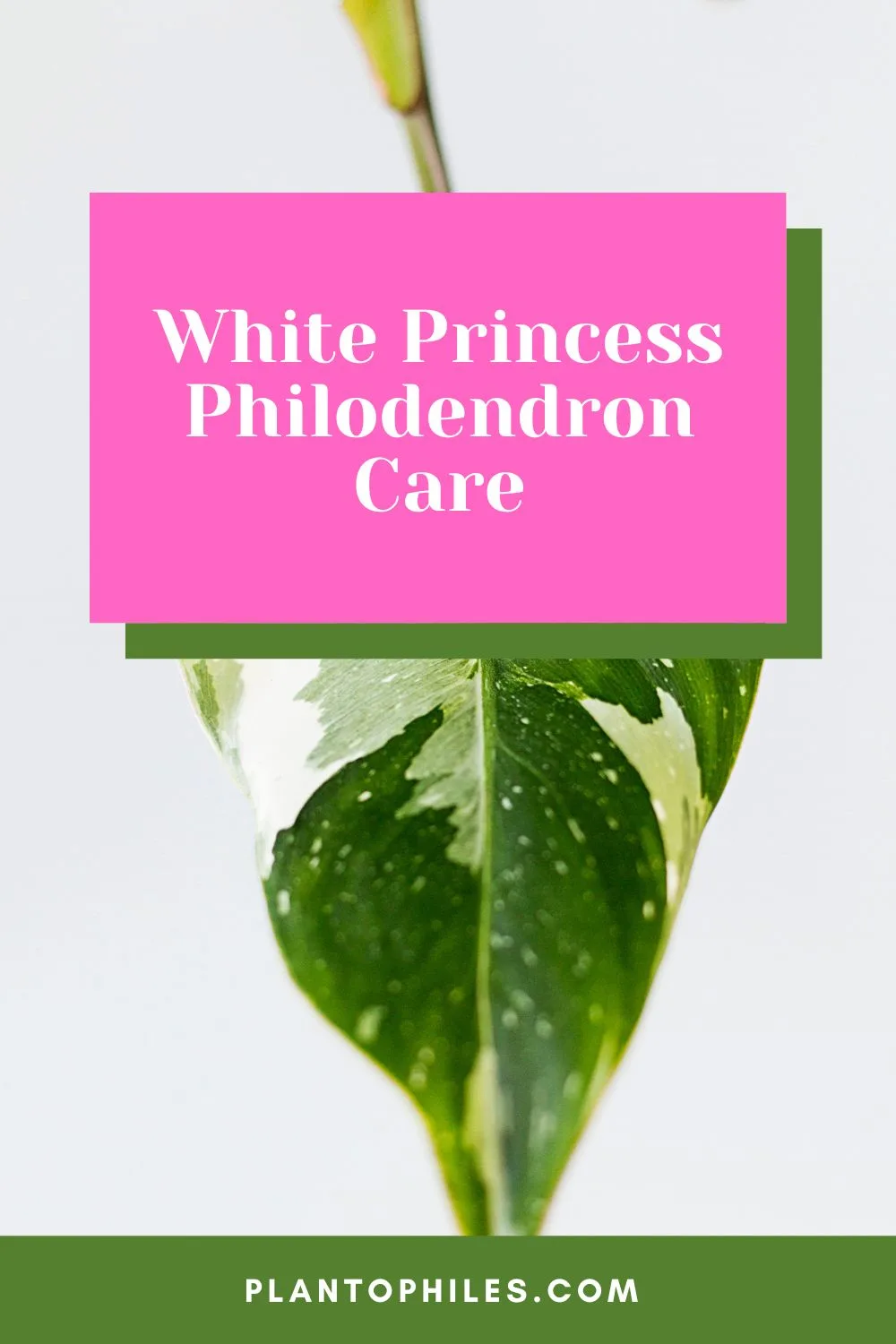
Table of Contents
White Princess Philodendron Growing Guide
Soil
Although the White Princess Philodendron plant is rare, its ideal potting mix ingredients are standard.
It thrives in almost all the soil mixes a typical Philodendron would. However, the soil must be well-draining while also retaining some moisture.
If you want a healthy White Princess Philodendron plant, avoid using heavy soils like peat earth, as this causes suffocation of the roots.
I suggest mixing small amounts of perlite, peat moss, sphagnum moss, and coco coir. You can also add some houseplant soil if you cannot find Philodendron-specific soil commercially.
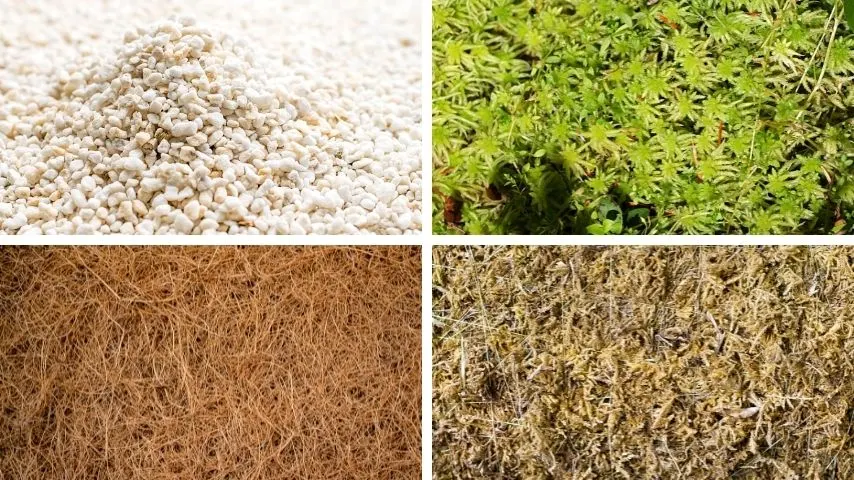
Water
Water your White Princess Philodendron plant once a week or whenever the top few inches seem dry. Add water all around the plant so that it remains hydrated.
If you have added a lot of moisture-retaining ingredients to your White Princess Philodendron plant’s soil, they will keep absorbing it every time you add water.
Therefore, please make sure you keep the topsoil well hydrated.
Once done, please don’t forget to wipe the leaves.
Light
The White Princess Philodendron plant grows best in bright, indirect sunlight.
The plant can only maintain its typical variegation if placed in bright light, but it must be filtered to protect the leaves from scorching. Usually, southeast and east-facing windows offer ideal sunlight.
If your White Princess Philodendron plant’s leaves seem yellow or dry quicker than usual, you have exposed it to excess sunlight.
On the other hand, if the stems are unproportionally long and leggy, you need to change the White Princess Philodendron plant’s location to a sunnier spot.
Temperature
The White Princess Philodendron plant’s favorite temperature range is 64.4° F – 73.4° F (18° C – 23° C). This temperature is relatively easy to maintain indoors because it thrives inside the house.
Outdoors, the Princess Philodendron plant also does okay, but only if the temperatures are to its liking.
If you keep the plant in an unfavorable environment for long, it directly affects the new growth. The existing growth also suffers, leading to wilting and drooping leaves.
Humidity
The White Princess Philodendron is a lovely plant that adapts to various humidity levels.
But maintaining the desired moisture levels is necessary to bring about the healthiest and most vigorous growth.
The ideal humidity level lies at 50% – 85% for the White Princess Philodendron plant. You can install a humidifier to maintain these levels. Misting plants does not work to increase the humidity for a prolonged time.
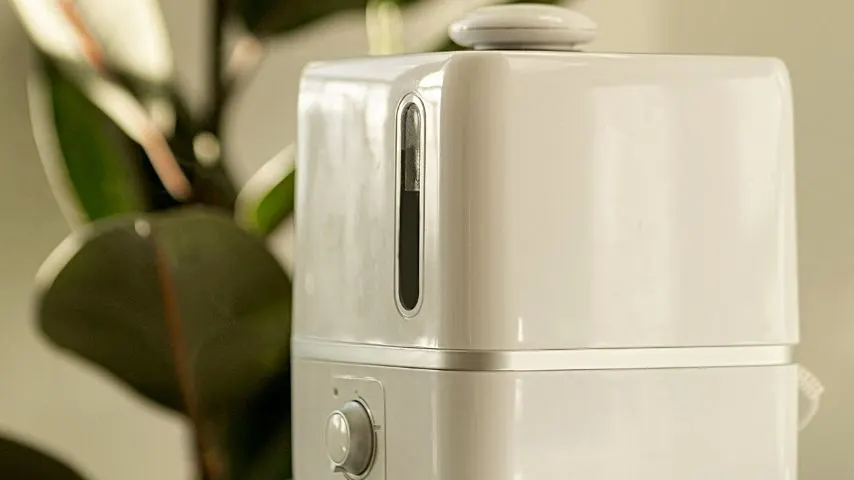
Fertilizer
Fertilize once a month in the growing seasons.
Summer and spring are the best times to feed the White Princess Philodendron plant. This is when the plant grows the best, giving off beautiful and healthy leaves and shoots.
The fertilizer should have all the essential macro and micronutrients, including nitrogen, potassium, phosphorus, and magnesium.
For blooms, fertilizers with a high phosphorus content work best. Feed your White Princess Philodendron plant every few months by following the instructions on the packaging.
Repotting
It is a rough time to repot the White Princess Philodendron plant once a year or when it outgrows its pot.
Use fresh potting soil ingredients, adding coco coir and peat moss. But if you have recently added fertilizer, you do not need to add more.
Place the plant in bright, filtered sunlight and add some water to keep it fresh and thriving.
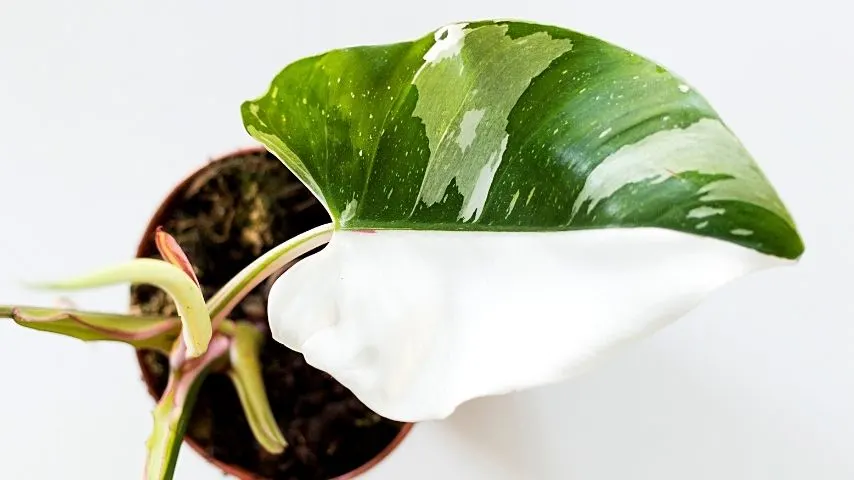
Pruning
The White Princess Philodendron plant is moderately sized and grows slowly. Therefore, you do not need to prune it unless the stems make it look messy or have outgrown its space.
Also, remove any ill-looking leaves and nodes. The pruning should be done during springtime so the plant is active and can redistribute its ingredients.
Pruning gives the plant a fresh look and eliminates any diseased foliage before the causative agent spreads further.
Use a pair of clean pruning shears to prevent reinfection and transmission of infections from one plant to another.
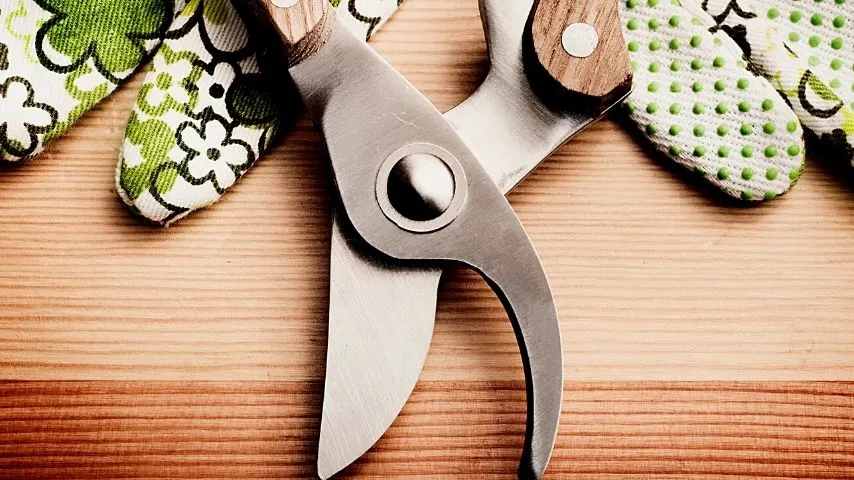
Propagation
The White Princess Philodendron plant can be propagated via stem cuttings.
The best time to propagate this beauty is early summer and spring. Here’s how you can do it:
- Pick a healthy White Princess Philodendron plant and cut off a stem with at least three nodes.
- Make a horizontal cut about seven inches from the stem.
- Fill a small pot with an appropriate potting mix and add some water.
- Pluck the cutting’s bottom leaves and put the cutting in the pot.
- Place the pot in indirect sunlight and cover it with a plastic bag.
- You should see some roots after about 25 days and some leaves a few days later.
- You can then remove the plastic bag and treat it as an adult White Princess Philodendron plant.
Blooms
The White Princess Philodendron plant blooms once a year. However, it will take years will you to see them.
The blooms appear when the plant is given the right care, including high humidity, bright light, and organic, nutritious soils.
Growth
The White Princess Philodendron plant grows best in USDA hardiness zones 10 to 12 with the proper care.
It attains a 3-5 feet height and a spread of 1-2 feet. The plant is self-heading and grows upright without much support.
The White Princess Philodendron plant grows most actively in summer and spring and goes dormant in the winter months. Feeding the plant during this time should be avoided.
Philodendron White Princess vs. White Knight
The White Princess has narrower leaves compared to the Philodendron White Knight. The stems are green. The White Knight has pink to brown stems. Usually, it sports white streaks on the edges and brown to purple stems. It grows faster compared to the White Princess.
Both plants are climbers. The White Princess has a shorter internodal distance. The White Wizard or Knight has bigger splotches of white.
Common Problems for White Princess Philodendron
Spider Mites
One of the commonest attackers of the White Princess Philodendron plant is spider mites.
Scientifically known as Tetranychus Urticae, these are tiny pests that cause significant damage if their numbers are not controlled.
Barely visible to the naked eye, they infest plants exposed to high humidity. Their characteristic symptom is dusty cobwebs on various leaves.

Another sign is leaf mottling, which completely ruins the plant’s look. They can also lead to dried leaves, premature leaf fall, and loss of vigor.
Use pesticides on your White Princess Philodendron plant to eliminate them, or use neem oil and apply abundantly on each leaf.
Wax Scale
Wax scale, or soft scale and coccid scale, is caused by a pest. These are sap-sucking plant pests, similar to armored-scale insects and aphids.
They suck on the plant’s sugary liquids, producing copious honeydew, a sweet and sticky product.
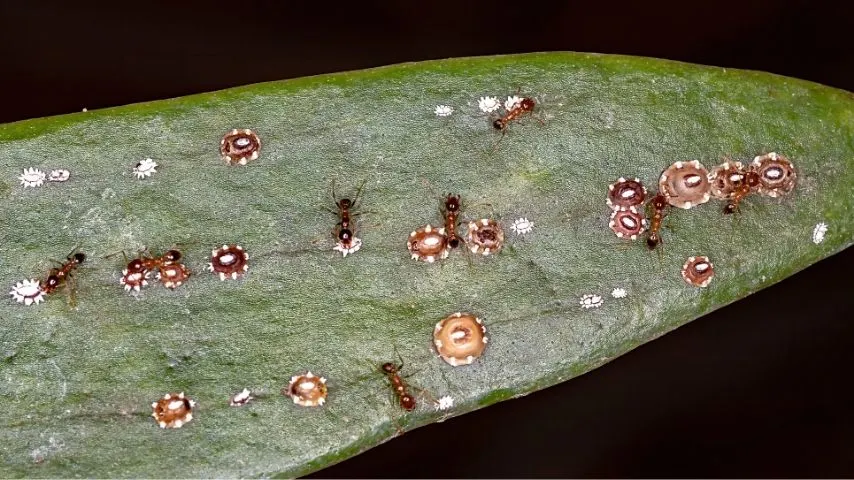
They can also cause the yellowing of leaves and premature fall. The White Princess Philodendron plant’s nutrients are depleted, and all growth halts.
Their characteristic symptom is honeydew, which attracts even more pests to the plant.
To treat these diurnal pests, treat your plant with pesticide, ensure that the surrounding plants are not infected, and dust your plants often to remove them before a severe infestation.
Root Rot
Another frequent disease with the White Princess Philodendron plant is root rot. It is mainly caused by fungal pathogens as well as overwatering.
Other reasons include inadequate fertilizer and light levels.
Phytophthora, Rhizoctonia, and Pythium are the pathogens that most commonly attack your White Princess Philodendron plant, which can lead to root rot.
Root rot chiefly affects the roots; therefore, it is only noticeable when it’s too late to save your plant. The plant greatly suffers as the disease progresses, eventually killing all the parts.
To prevent this condition, spray your White Princess Philodendron plant with a fungicide every few weeks or apply neem oil, and limit watering to once a week only.
Also, check the plant’s roots every time you repot for any signs of root rot.
Tips for Growing White Princess Philodendron Plant
- The White Princess Philodendron plant grows best in moderate conditions; therefore, place it inside the house in front of a sunny window and close to a humidity source, such as a bathroom.
- Please maintain high humidity levels, over 50%, to keep the plant fresh and thriving.
- Keep the White Princess Philodendron plant in a temperature range of 64.4° F – 73.4° F (18° C – 23° C) so it grows the healthiest.
- Grow the White Princess Philodendron plant in fertile, organic soils containing peat moss, perlite, or coco coir.
- The White Princess Philodendron plant is a slow-grower. Therefore, please do not feed it repeatedly to speed up its growth. Overfeeding will only cause burning and feed-associated stress.
White Princess Philodendron Toxicity
If ingested, the plant is toxic to plants and humans, so please keep your furry friends and toddlers safe from the White Princess Philodendron plant.
Read about Philodendron grazielae care next.
Frequently Asked Questions
Is the White Princess Philodendron plant a fast-growing Philodendron?
The White Princess Philodendron plant is slow-growing, but its beauty makes it worth the wait. Place it in high humidity, medium light, and temperatures ranging between 64.4° F – 73.4° F (18° C – 23° C) to grow the healthiest White Princess Philodendron plant.
Why is the White Princess Philodendron plant more expensive than other Philodendrons?
The White Princess Philodendron plant is a rare Philodendron. Its high demand, scarcity, geographical location, and variegation are the most significant reasons it is so pricy.
What is the difference between the White Princess Philodendron plant and Philodendron white knight?
The White Princess Philodendron plant is much lighter than the White Knight plant. The White Knight Philodendron plant also has greener stems with pink and white variegation and narrower leaves. It is also a climber, unlike the White Princess plant, a self-header.
Is the White Princess Philodendron plant easier to grow than Philodendron White Knight?
The White Princess Philodendron plant is as easy to grow as the Philodendron White Knight. It requires bright, dappled sunlight, occasional watering, and high humidity to flourish.
Conclusion On White Princess Philodendron Care
The plant likes dappled sunlight and plenty of moisture and organic soils with perlite or sphagnum moss. White Princess Philodendron care is easy if you get the soil mix and watering right.

Daniel has been a plant enthusiast for over 20 years. He owns hundreds of houseplants and prepares for the chili growing seasons yearly with great anticipation. His favorite plants are plant species in the Araceae family, such as Monstera, Philodendron, and Anthurium. He also loves gardening and is growing hot peppers, tomatoes, and many more vegetables.


